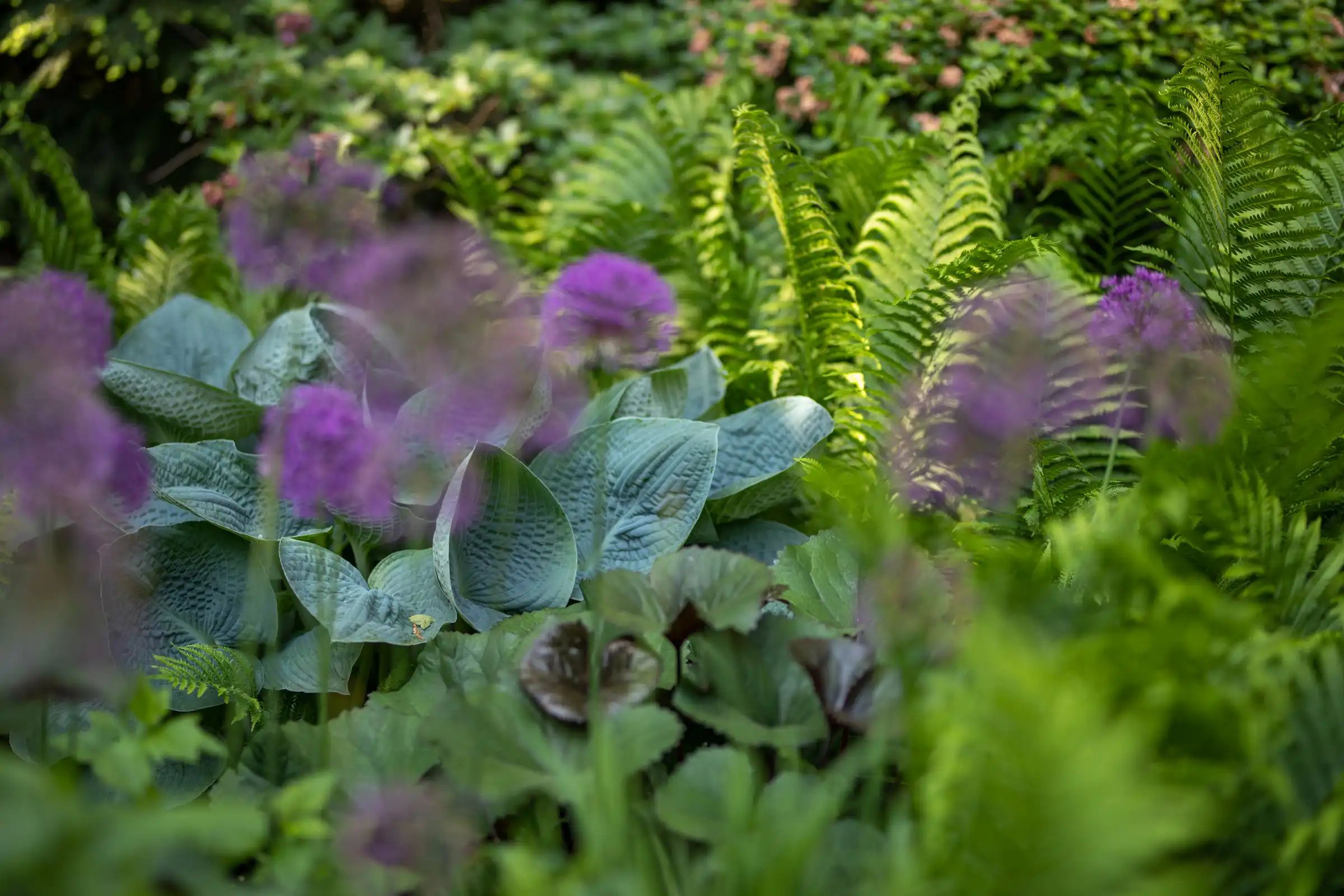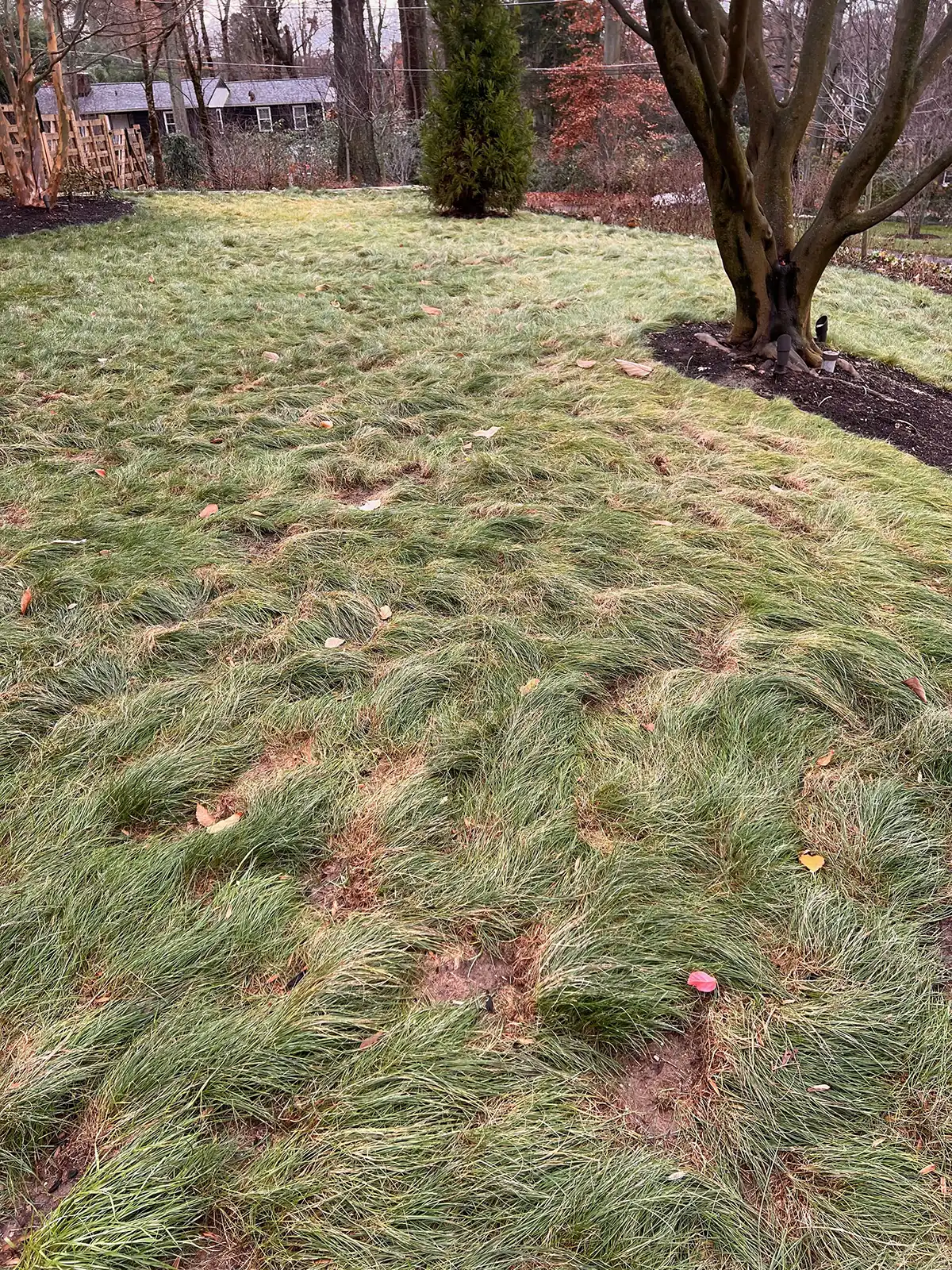While it’s true that plant dormancy mitigates much of the damage done by winter weather, it’d be wrong to assume our gardens are invincible during this time. Among the most common plagues plants face each year is what’s known as winter desiccation. Even harder to prevent than it is to spell, desiccation—in its simplest form—is an excessive drying out of plants occurring when more water evaporates from leaves than is sucked up by roots.
This predicament affects any plants whose foliage remains over the winter, i.e. evergreens such as boxwoods, rhododendrons, hollies, hemlocks, or pines. For them, replacing water lost by leaves on sunny and windy days is next to impossible, as dry, frozen soil doesn’t provide sufficient moisture to the roots. The result of this is browning foliage and needle drop, with your broadleaf evergreens (rhododendrons, skip laurels, hollies, etc) experiencing a higher propensity for damage than their coniferous counterparts.
During or after any particularly long or harsh winter, you may have noticed plants experiencing these symptoms. But don’t be led to believe they’re off the hook if it’s a bit warmer than usual or if spring is closing in. Until the last frost, the threat of desiccation remains and should be watched regardless of how unseasonably warm it gets. The last month of winter and first of spring are actually some of the most difficult for plants, as unseasonably warm weather will trigger them to leave dormancy and begin to push new growth that’s particularly vulnerable to a late frost.
“… desiccation—in its simplest form—is an excessive drying out of plants occurring when more water evaporates from leaves than is sucked up by roots.”
When that happens, the year’s blooms can get stunted or fail to appear at all, having been injured or killed off before spring fully arrives. Fortunately, none of these issues are a death sentence for your plants, especially if you take the right precautions to prevent significant damage from happening!
One common preventative measure is to thoroughly soak the root zone of any evergreen (especially young or unestablished specimens) in the fall before the soil freezes, which will help ensure the plant begins the colder seasons with adequate moisture levels. Another is to apply an anti-desiccant spray to the foliage of potentially affected plants, which helps prevent any damage that does occur. These are useful and can be effective, but the easiest and most common preventative measure is actually just a layer of leaves or mulch spread around the roots of your plants. This acts as a sort of barrier between plant root systems and the elements, effectively mitigating the desiccation that would otherwise occur uninhibited.
“… the easiest and most common preventative measure is actually just a layer of leaves or mulch spread around the roots of your plants.”
If you missed your opportunity to do these things in fall, don’t dismay. During any of the unseasonably warm days that pop up each winter, you can apply these techniques and greatly improve the chances of plant survival. While it should be noted that these preventative measures are hardly “magic bullets,” they can go a long way in protecting your trees and shrubs from harm. At Terren, we offer anti-desiccant spray services for small trees and shrubs, as well as watering advice and mulch applications to all of our customers, which we’ve found really pays off for many of them. If you’re looking for some professional help yourself, don’t hesitate to contact your local landscape maintenance or horticultural service company. They’ll be glad to help!
Reference:
Zinati, G., A. B. Gould, R. Buckley, and R. Obal. 2006. Landscape and Ornamental Plant Stress: Factors, Symptoms, Diagnosis and Management. Rutgers Cooperative Research and Extension. E309.




